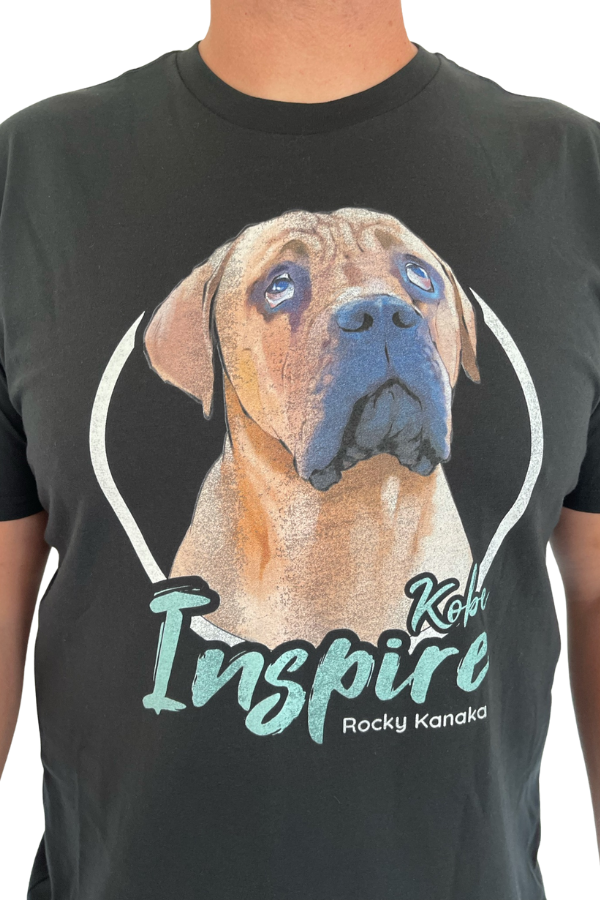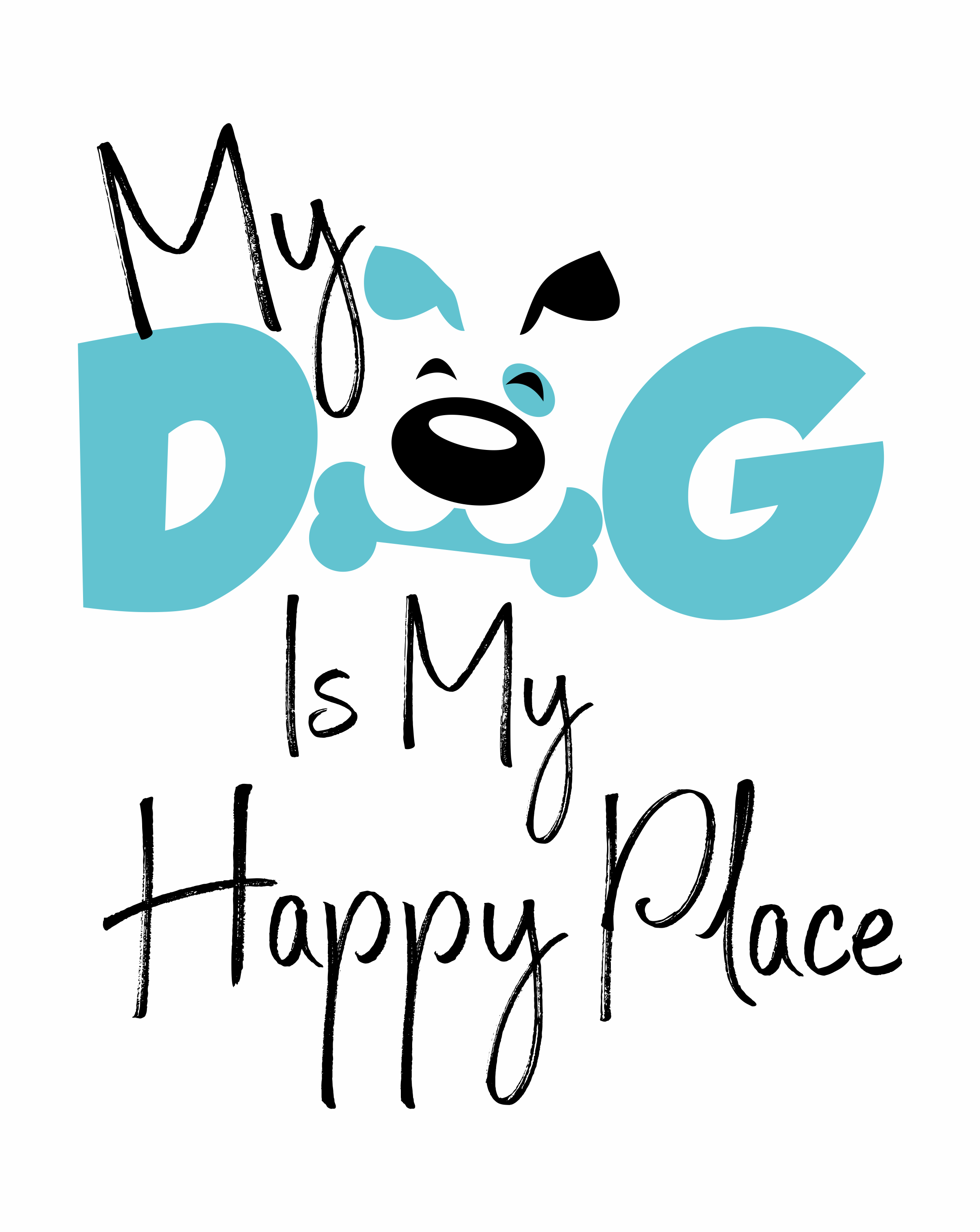Health & Wellness Nutrition & Recipes Recipes
Could Kefir Help Even Healthy Dogs Live Longer?
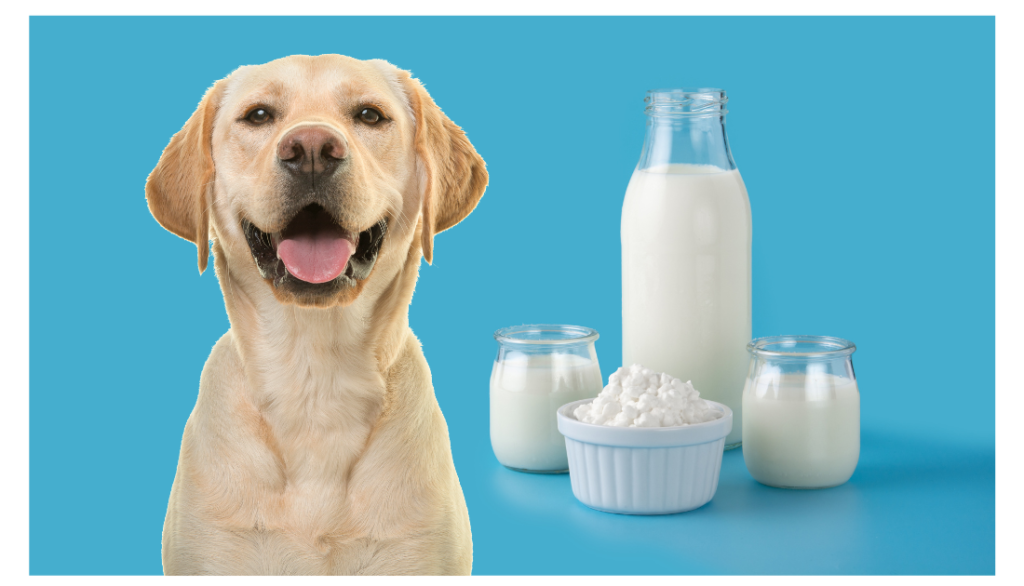
It has become trendy to add extra food toppers and extra ingredients to your dog’s food, but are any of these fads really worth the hype? Kefir could be one popular dog food topper that’s actually legit, especially if your dog easily gets an upset stomach, regularly has gas or has any kind of digestive issue.
In this guide, we’re covering what kefir is, the benefits of kefir for dogs, where to buy kefir, and even how to make it yourself at home plus much more!
What is Kefir?
Kefir is a fermented milk drink with a creamy, sour flavor. Thinner than yogurt but thicker than milk, kefir is rich in nutrients like calcium, B vitamins, and protein. Like many fermented foods, kefir is also an excellent source of probiotics, which benefit gut health and digestion.
Kefir is made from cow’s milk and kefir grains—living clusters of beneficial bacteria and yeast that feed on lactose and create the thick texture and tangy flavor of milk kefir. Because the culture responsible for this fermentation process feeds on lactose, finished milk kefir has significantly less lactose than milk.
Is Kefir Good for Dogs?
Yes! Kefir is so much more than a hyped-up fad—there’s science backing up this ingredient. Kefir has been proven capable of improving and increasing healthy gut bacteria in dogs in much the same way it does for humans. Continued consumption of kefir helps to maintain a healthy gut while removing kefir from a dog’s diet results in an evident decline of healthy bacteria.
So, what exactly are the benefits of kefir for dogs? What do those healthy gut bacteria do?
- Supports a healthy immune system
- Supports nutrient absorption
- Supports cognition
- Aids digestion
- Reduces gas, bloating, and gastrointestinal issues
- Alleviate symptoms of allergies
- Helps to reduce the presence of harmful gut bacteria
- Repair and replenish gut microbiome following illness, antibiotics, etc.
Kefir vs. Yogurt: What’s the Difference?
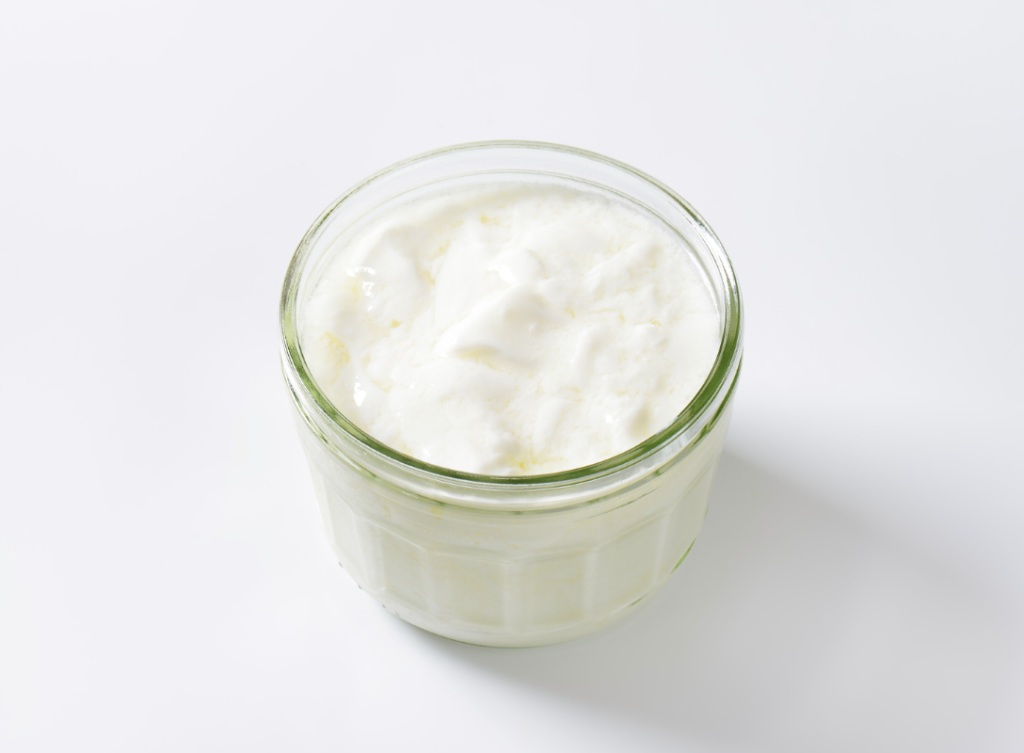
Don’t let the fermentation fool you, kefir and yogurt are different in a few key ways.
There are lots of different kinds of yogurt—Greek yogurt, French yogurt, drinkable yogurt—and none of them are the same as kefir! To produce these different types of yogurt, milk is combined with carefully measured bacterial mixtures. The exact bacteria and their proportions dictate how the yogurt will taste and feel, and can vary enormously depending on the method used.
Kefir can only be made with the very specific culture of yeast and bacteria for which it is named: kefir grain. Kefir grain doesn’t vary from region to region and produces only one kind of milk kefir.
While both yogurt and kefir contain probiotics, they don’t contain the same type of probiotics. Yogurt contains transient bacteria, which benefit the gut microbiome for a short time before either being consumed or flushed out.
Kefir on the other hand contains resident bacteria, which happily make their home in our guts. These resident bacteria help stave off harmful bacteria, aid in digestion, and reduce gastrointestinal upset. They can also feed on transient bacteria—so bacteria from kefir may consume the bacteria from yogurt.
Kefir also contains a much larger variety of probiotics, and is one of the most diverse sources of probiotics you can safely give to your dog.
It’s also worth mentioning the issue of lactose. Many dogs are sensitive to lactose, since it wouldn’t occur naturally in their diet. Because kefir is significantly lower in lactose than yogurt, it’s a much safer option for adding probiotics to a dog’s diet, and likely won’t cause diarrhea, gas, or tummy trouble.
How To Serve Kefir To Your Dog
“Adding 1 tablespoon per 10 pounds of dog weight of plain kefir to your dog’s food is a great way to boost gut health,” says Dr. Karen Becker, veterinarian and author of The Forever Dog, a New York Times best seller with tips like how much kefir for dogs and more to help your dog live a longer, happier life.
Simply adding kefir directly to your dog’s food is a great way to give them their probiotics, assuming they’ll accept it! Some dogs love the flavor and consistency of kefir on its own, while others will need you to get a little bit more creative. If your dog won’t eat their food wet or with liquid added, try making frozen kefir, peanut butter, and banana pupsicles!
Ingredients:
- 1 cup plain kefir
- 1 cup peanut butter (xylitol-free)
- 2 ripe bananas
Directions:
- Add all ingredients to a blender and blend until smooth and well incorporated.
- Place silicon molds of your choice on a cookie sheet to keep them stable, and make transfering the molds to the freezer a spill-free experience.
- Pour the blended mixture into the silicone molds.
- Transfer the molds to the freezer and allow to set at least 12 hours or overnight.
- Carefully remove the treats from the mold and store in an airtight container until you are ready to serve!
These simple, probiotic pupsicles are a fun treat to serve on their own, or can be added to food as a topper.
What is the Best Kind of Kefir for Dogs?
Whether you make it at home or buy it from the store, your dog will enjoy the benefits of kefir’s probiotics either way! Because kefir can only be made in one way—by combining milk and kefir grain—there isn’t much difference between the kefir you can buy and what you’ll make at home. Of course, if you’re nervous about safely fermenting dairy at home, it’s a good idea to leave it to the experts so you can ensure your pup’s treats are safe.
While kefir is most commonly made with cow’s milk, this fermented drink can also be made with goat or sheep’s milk. But which is the best kefir for dogs?
What is Kefir Cheese?
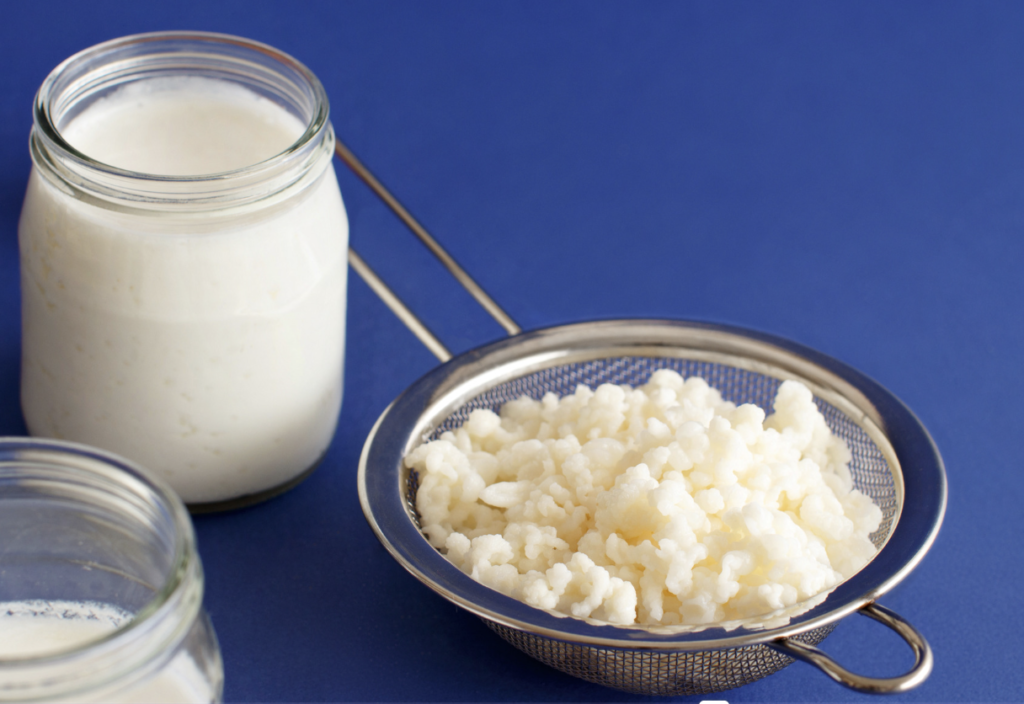
Possibly one of the easiest cheeses to make at home, kefir cheese is what happens when you “overculture” your milk kefir. If left to ferment long enough, milk kefir will eventually become acidic enough to separate into curds and whey. The separated curds can be pressed together into soft but grainy cheese that falls somewhere between the texture of feta and cream cheese.
When left un-salted, kefir cheese is perfectly safe for dogs to eat, and can even be beneficial thanks to the presence of probiotics. Remember that kefir cheese is higher in fat than milk kefir, so you should be giving your dog less kefir cheese than you would give them milk kefir.
Is Goat Milk Kefir for Dogs Okay?
In some cases, it’s best to choose goat milk kefir for dogs with allergies to cow milk or sensitivities to dairy that are not associated with lactose. Goat’s milk contains similar amounts of lactose to cow’s milk, and isn’t a good substitute if your dog is lactose intolerant. While some people claim that the process of producing kefir almost eliminates lactose, there is plenty of evidence that kefir still contains lactose after the fermentation process is complete.
What Are the Best Store-Bought Kefir Brands?
When buying kefir for your dog, it’s really important to choose an option that is free from added sugar, flavorings, or artificial additives. For example, you wouldn’t want to choose a strawberry kefir for your dog. Your best bet is to purchase a kefir made specifically for dogs, which you can find at natural pet stores and some larger chain pet stores. Some of our favorites include:
1. Answers Pet Food Fermented Raw Cow Milk Kefir


2. Bones & Co Raw Goat Milk Kefir


3. Open Farm Organic Grass-Fed Cow Milk Kefir


How To Make Homemade Kefir
You also have the option to make kefir at home! Made with just two ingredients, kefir is surprisingly easy to make with a little bit of time and patience. This recipe comes from Live Eat Learn, but you can use any kefir recipe as long as the two ingredients are milk and kefir grain.
Ingredients:
- 1 tablespoon kefir grains
- 4 cups whole milk
Tools & Equipment:
- Large glass jug or jar (5 cup minimum)
- Plastic or wood slotted spoon
- Cheesecloth or coffee filters
- Wide-mouth plastic or glass bowl
- Large jar for storing finished kefir
Instructions:
- Wash everything well with regular soap (avoid antibacterial soaps).
- In a large glass jug, combine the kefir grains and milk. Cover the jug with 2-3 layers of paper coffee filters and secure with a rubber band.
- Place the jug in a warm, dark location (65 to 85°F) for about 24 hours. When your kefir has slightly thickened and smells fermented, it is ready. You’ve gone too far if your kefir has separated into yellowish, watery whey and curds—that’s kefir cheese!
- Place a wide non-metal bowl under a fine-mesh non-metal strainer. Pour your finished kefir into the strainer, stirring with a spoon to keep the kefir flowing. The grains will be left over and can be used again.
- Transfer the finished kefir to a sealable jar or air tight container. Homemade kefir can be stored in the fridge for around 2 weeks.
Tips for Introducing Kefir to Your Dog’s Diet
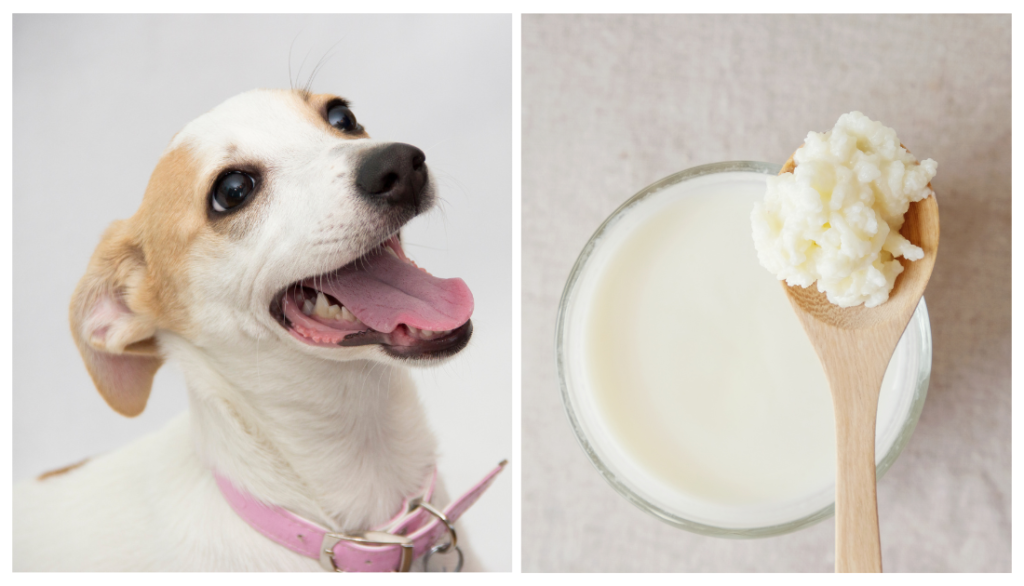
So, we’ve convinced you to try adding kefir to your dog’s diet! Congratulations—your pup is on the way to the healthiest gut of their lives, but don’t get overzealous. It’s important to take things slow and always introduce new foods gradually so that you don’t upset your dog’s stomach. Although kefir contains probiotics that are great for gut health, it can still upset the balance when first added to a diet. You’re adding good bacteria and the bad bacteria won’t like it, which can cause some tummy troubles.
Here are a few keys to successfully introducing kefir to your dog:
- Go slow. Start by adding a few drops or a ¼ teaspoon of kefir to your dog’s food. If your dog shows no signs of tummy trouble, you’ll know that it’s safe to start increasing from there.
- Stick to the recommended portion. Remember that one tablespoon for every 10 pounds of weight is more than enough, and many dog owners recommend feeding even less.
- Try try again. Some dogs just don’t like kefir the first few times they are served it, and that’s okay! It might take your pup a few times to get used to seeing and smelling kefir in their bowl before they even try it.
- Switch things up. If your dog still won’t eat kefir even after you’ve served it a number of times, it’s time to switch things up. Try serving kefir to them in the form of dog treats or pupsicles to see if they’ll accept it separate from their food.
- Know when to stop. If your dog starts to show signs of gastrointestinal upset, experiences diarrhea, or becomes gassy after introducing kefir into their diet, it’s a good idea to stop giving it to them. The issue could be that you introduced it too quickly to their diet, but if you were careful to go slowly, it could be a food sensitivity or allergic reaction.
Related Articles
- Why Savvy Pet Parents Are Adding Raw Eggs & Eggshells To Their Dogs’ Food!
- 10 Best CBD Dog Treats on the Market
- The Best Dog Supplements for Skin & Coat Available on Amazon
- How to Help a Dog Lose Weight


